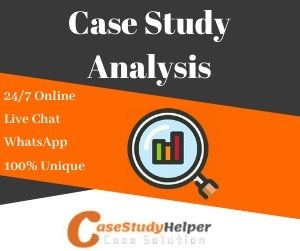

Equator Principles An Industry Approach To Managing Environmental And Social Risks Spanish Version Case Study Solution
Equator Principles An Industry Approach To Managing Environmental And Social Risks Spanish Version Case Study Help
Equator Principles An Industry Approach To Managing Environmental And Social Risks Spanish Version Case Study Analysis
The following area concentrates on the of marketing for Equator Principles An Industry Approach To Managing Environmental And Social Risks Spanish Version where the company's customers, competitors and core proficiencies have evaluated in order to justify whether the decision to launch Case Study Help under Equator Principles An Industry Approach To Managing Environmental And Social Risks Spanish Version brand name would be a possible choice or not. We have actually first of all taken a look at the kind of consumers that Equator Principles An Industry Approach To Managing Environmental And Social Risks Spanish Version deals in while an examination of the competitive environment and the business's strengths and weak points follows. Embedded in the 3C analysis is the justification for not introducing Case Study Help under Equator Principles An Industry Approach To Managing Environmental And Social Risks Spanish Version name.

Both the groups utilize Equator Principles An Industry Approach To Managing Environmental And Social Risks Spanish Version high performance adhesives while the business is not just involved in the production of these adhesives but likewise markets them to these customer groups. We would be focusing on the customers of instantaneous adhesives for this analysis because the market for the latter has a lower capacity for Equator Principles An Industry Approach To Managing Environmental And Social Risks Spanish Version compared to that of instant adhesives.
The total market for instant adhesives is around 890,000 in the United States in 1978 which covers both customer groups which have actually been recognized earlier.If we look at a breakdown of Equator Principles An Industry Approach To Managing Environmental And Social Risks Spanish Version prospective market or consumer groups, we can see that the company sells to OEMs (Initial Equipment Manufacturers), Do-it-Yourself customers, repair and overhauling business (MRO) and makers dealing in products made of leather, wood, plastic and metal. This diversity in clients suggests that Equator Principles An Industry Approach To Managing Environmental And Social Risks Spanish Version can target has numerous choices in regards to segmenting the marketplace for its brand-new item particularly as each of these groups would be requiring the very same kind of item with respective modifications in quantity, packaging or need. However, the client is not price delicate or brand conscious so introducing a low priced dispenser under Equator Principles An Industry Approach To Managing Environmental And Social Risks Spanish Version name is not a recommended alternative.
Equator Principles An Industry Approach To Managing Environmental And Social Risks Spanish Version is not simply a maker of adhesives but delights in market leadership in the instantaneous adhesive industry. The business has its own competent and qualified sales force which includes worth to sales by training the business's network of 250 suppliers for assisting in the sale of adhesives. Equator Principles An Industry Approach To Managing Environmental And Social Risks Spanish Version believes in special distribution as indicated by the truth that it has actually picked to offer through 250 suppliers whereas there is t a network of 10000 suppliers that can be explored for expanding reach through suppliers. The business's reach is not limited to North America just as it also delights in worldwide sales. With 1400 outlets spread all across North America, Equator Principles An Industry Approach To Managing Environmental And Social Risks Spanish Version has its in-house production plants rather than using out-sourcing as the favored strategy.
Core proficiencies are not restricted to adhesive production only as Equator Principles An Industry Approach To Managing Environmental And Social Risks Spanish Version also focuses on making adhesive dispensing equipment to help with using its items. This double production method offers Equator Principles An Industry Approach To Managing Environmental And Social Risks Spanish Version an edge over rivals since none of the rivals of dispensing equipment makes immediate adhesives. Furthermore, none of these competitors offers directly to the customer either and makes use of suppliers for connecting to consumers. While we are looking at the strengths of Equator Principles An Industry Approach To Managing Environmental And Social Risks Spanish Version, it is crucial to highlight the business's weak points.
The business's sales staff is proficient in training suppliers, the truth remains that the sales group is not trained in selling equipment so there is a possibility of relying greatly on distributors when promoting adhesive devices. Nevertheless, it should likewise be kept in mind that the suppliers are showing unwillingness when it comes to selling equipment that needs maintenance which increases the difficulties of selling devices under a specific brand name.
The business has products intended at the high end of the market if we look at Equator Principles An Industry Approach To Managing Environmental And Social Risks Spanish Version product line in adhesive equipment particularly. The possibility of sales cannibalization exists if Equator Principles An Industry Approach To Managing Environmental And Social Risks Spanish Version sells Case Study Help under the same portfolio. Offered the truth that Case Study Help is priced lower than Equator Principles An Industry Approach To Managing Environmental And Social Risks Spanish Version high-end line of product, sales cannibalization would certainly be impacting Equator Principles An Industry Approach To Managing Environmental And Social Risks Spanish Version sales income if the adhesive devices is sold under the business's brand.
We can see sales cannibalization impacting Equator Principles An Industry Approach To Managing Environmental And Social Risks Spanish Version 27A Pencil Applicator which is priced at $275. If Case Study Help is launched under the business's brand name, there is another possible hazard which might reduce Equator Principles An Industry Approach To Managing Environmental And Social Risks Spanish Version revenue. The fact that $175000 has actually been invested in promoting SuperBonder recommends that it is not a great time for introducing a dispenser which can highlight the reality that SuperBonder can get logged and Case Study Help is the anti-clogging solution for the instant adhesive.
In addition, if we take a look at the market in general, the adhesives market does disappoint brand name orientation or rate awareness which gives us two extra factors for not releasing a low priced item under the business's trademark name.
The competitive environment of Equator Principles An Industry Approach To Managing Environmental And Social Risks Spanish Version would be studied by means of Porter's 5 forces analysis which would highlight the degree of competition in the market.
Bargaining Power of Buyer: The Bargaining power of the purchaser in this industry is low particularly as the buyer has low understanding about the product. While companies like Equator Principles An Industry Approach To Managing Environmental And Social Risks Spanish Version have handled to train suppliers relating to adhesives, the last customer depends on suppliers. Around 72% of sales are made directly by manufacturers and suppliers for instant adhesives so the purchaser has a low bargaining power.
Bargaining Power of Supplier: Offered the truth that the adhesive market is controlled by three players, it could be stated that the supplier enjoys a higher bargaining power compared to the buyer. However, the reality stays that the provider does not have much impact over the buyer at this moment specifically as the buyer does not show brand name recognition or rate level of sensitivity. This suggests that the supplier has the greater power when it comes to the adhesive market while the buyer and the manufacturer do not have a major control over the real sales.
Threat of new entrants: The competitive environment with its low brand name loyalty and the ease of entry revealed by foreign Japanese competitors in the instant adhesive market suggests that the marketplace permits ease of entry. If we look at Equator Principles An Industry Approach To Managing Environmental And Social Risks Spanish Version in particular, the business has double abilities in terms of being a manufacturer of instant adhesives and adhesive dispensers. Possible hazards in equipment giving industry are low which reveals the possibility of creating brand awareness in not just instant adhesives but also in giving adhesives as none of the market players has actually managed to position itself in dual abilities.
Threat of Substitutes: The threat of substitutes in the immediate adhesive market is low while the dispenser market in particular has substitutes like Glumetic suggestion applicators, inbuilt applicators, pencil applicators and advanced consoles. The truth remains that if Equator Principles An Industry Approach To Managing Environmental And Social Risks Spanish Version introduced Case Study Help, it would be indulging in sales cannibalization for its own items. (see appendix 1 for structure).

Despite the fact that our 3C analysis has actually offered different factors for not releasing Case Study Help under Equator Principles An Industry Approach To Managing Environmental And Social Risks Spanish Version name, we have actually a recommended marketing mix for Case Study Help given listed below if Equator Principles An Industry Approach To Managing Environmental And Social Risks Spanish Version decides to go ahead with the launch.
Product & Target Market: The target market picked for Case Study Help is 'Automobile services' for a variety of factors. There are currently 89257 facilities in this sector and a high usage of roughly 58900 pounds. is being used by 36.1 % of the market. This market has an additional development capacity of 10.1% which might be a good enough niche market section for Case Study Help. Not just would a portable dispenser offer benefit to this specific market, the truth that the Do-it-Yourself market can also be targeted if a potable low priced adhesive is being cost use with SuperBonder. The item would be offered without the 'glumetic pointer' and 'vari-drop' so that the consumer can decide whether he wishes to opt for either of the two accessories or not.
Price: The recommended cost of Case Study Help has actually been kept at $175 to the end user whether it is offered through distributors or by means of direct selling. This rate would not consist of the cost of the 'vari tip' or the 'glumetic pointer'. A rate below $250 would not require approvals from the senior management in case a mechanic at a motor vehicle maintenance shop needs to purchase the item on his own. This would increase the possibility of influencing mechanics to purchase the item for use in their day-to-day upkeep tasks.
Equator Principles An Industry Approach To Managing Environmental And Social Risks Spanish Version would just be getting $157 per unit as shown in appendix 2 which provides a breakdown of gross profitability and net success for Equator Principles An Industry Approach To Managing Environmental And Social Risks Spanish Version for introducing Case Study Help.
Place: A circulation design where Equator Principles An Industry Approach To Managing Environmental And Social Risks Spanish Version straight sends out the product to the local distributor and keeps a 10% drop delivery allowance for the distributor would be utilized by Equator Principles An Industry Approach To Managing Environmental And Social Risks Spanish Version. Since the sales group is already participated in selling instant adhesives and they do not have competence in offering dispensers, involving them in the selling process would be costly particularly as each sales call expenses approximately $120. The distributors are currently offering dispensers so offering Case Study Help through them would be a favorable option.
Promotion: Although a low advertising budget needs to have been appointed to Case Study Help however the fact that the dispenser is an innovation and it needs to be marketed well in order to cover the capital expenses sustained for production, the recommended marketing plan costing $51816 is suggested for at first introducing the item in the market. The planned advertisements in magazines would be targeted at mechanics in lorry upkeep stores. (Suggested text for the ad is shown in appendix 3 while the 4Ps are summed up in appendix 4).
